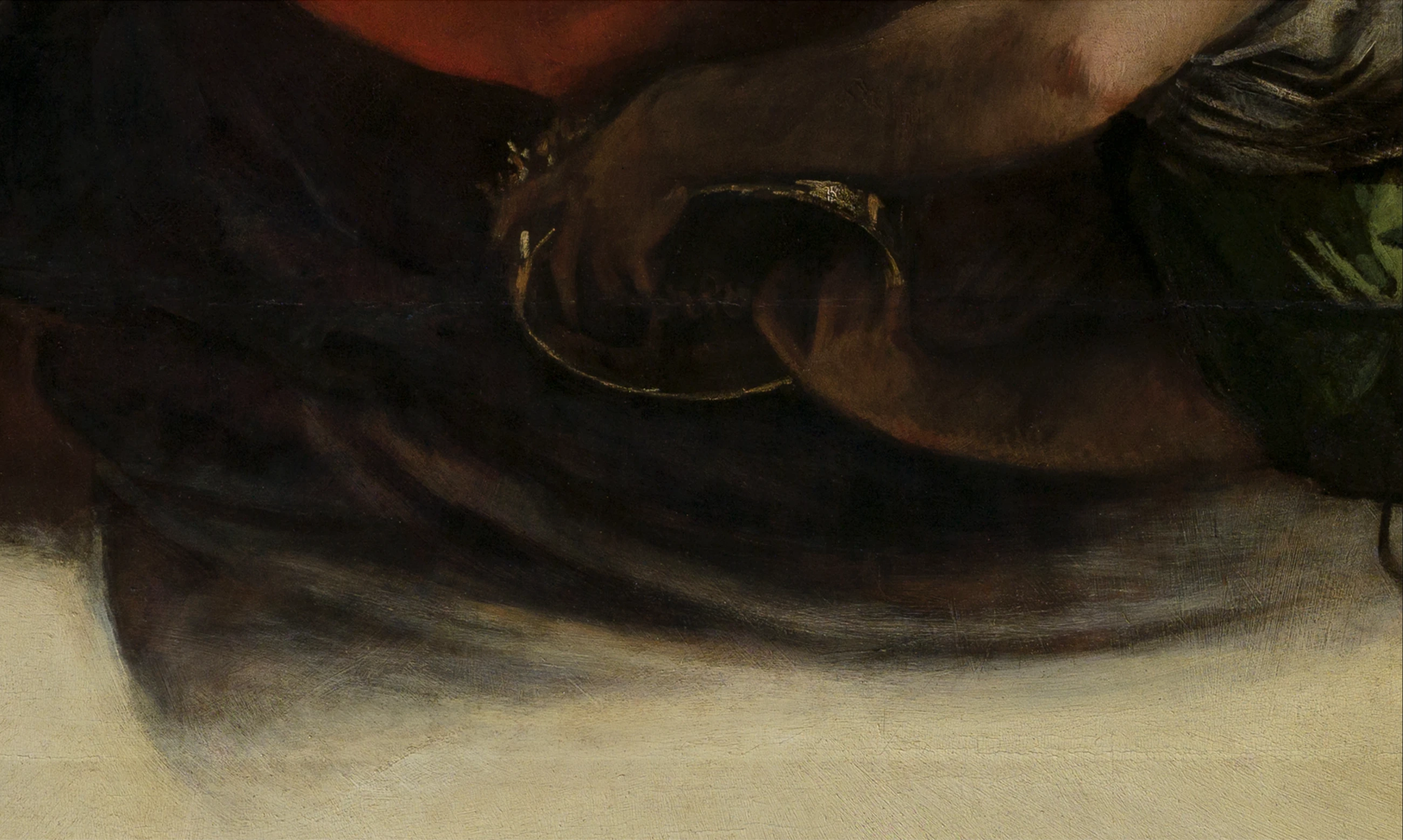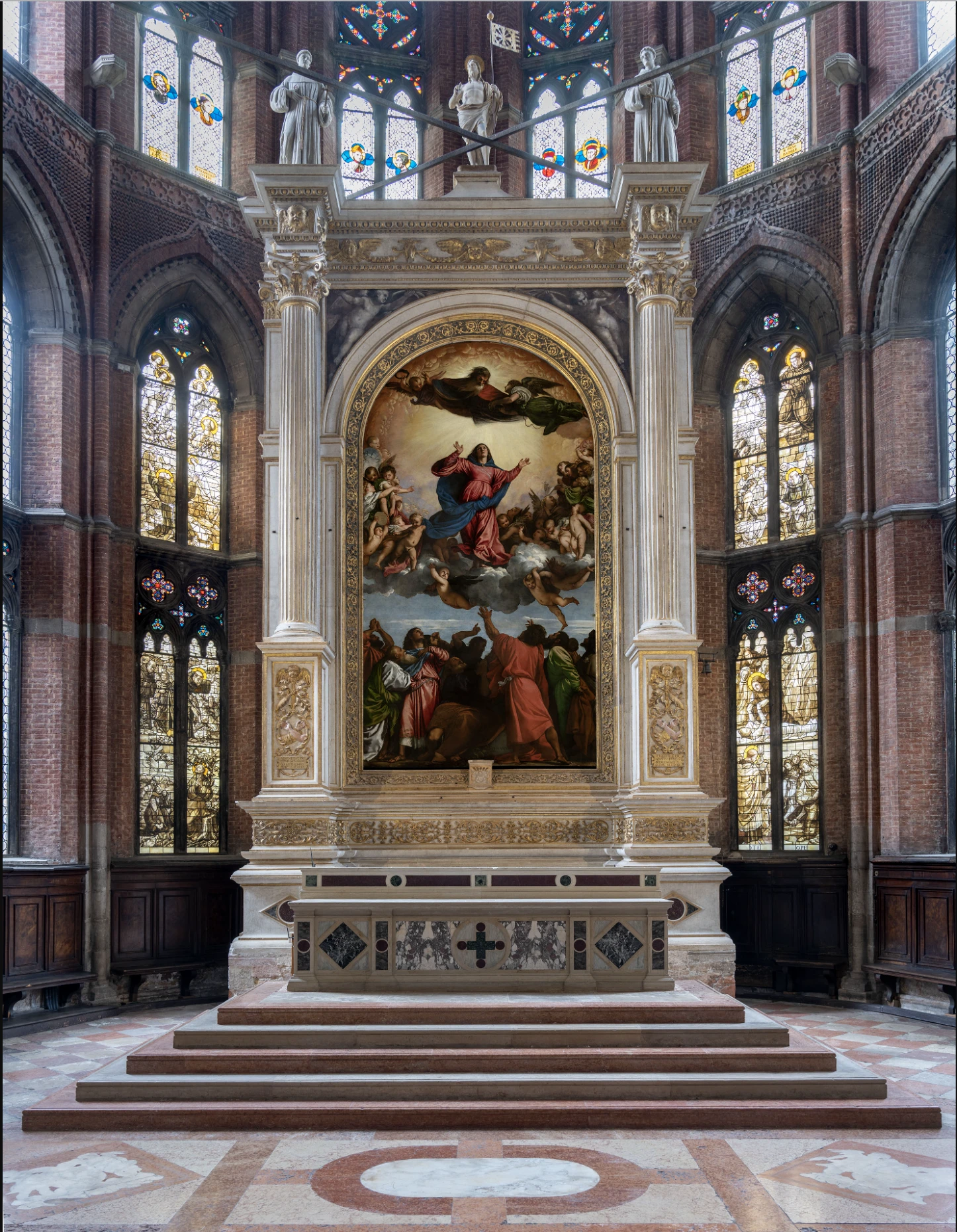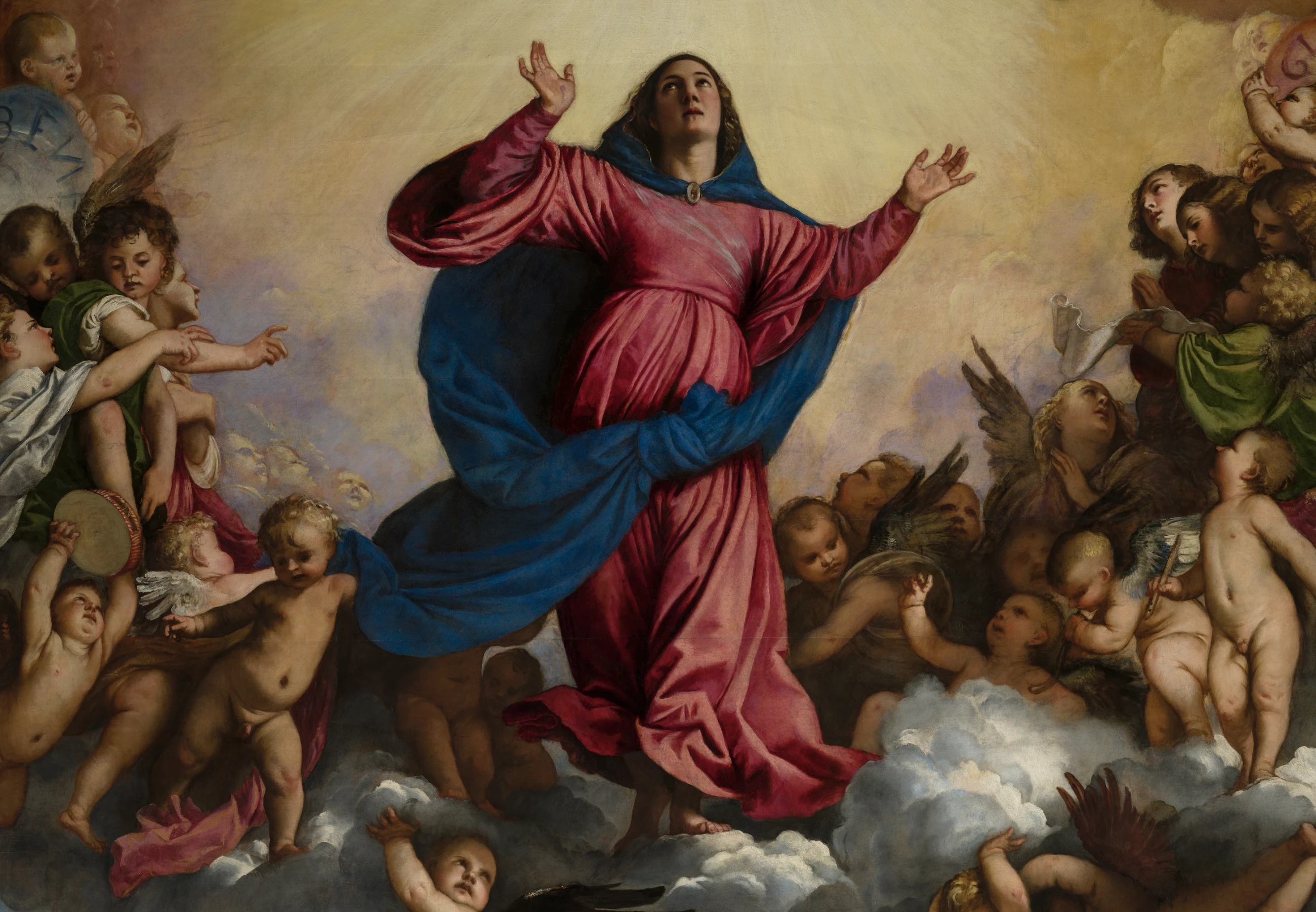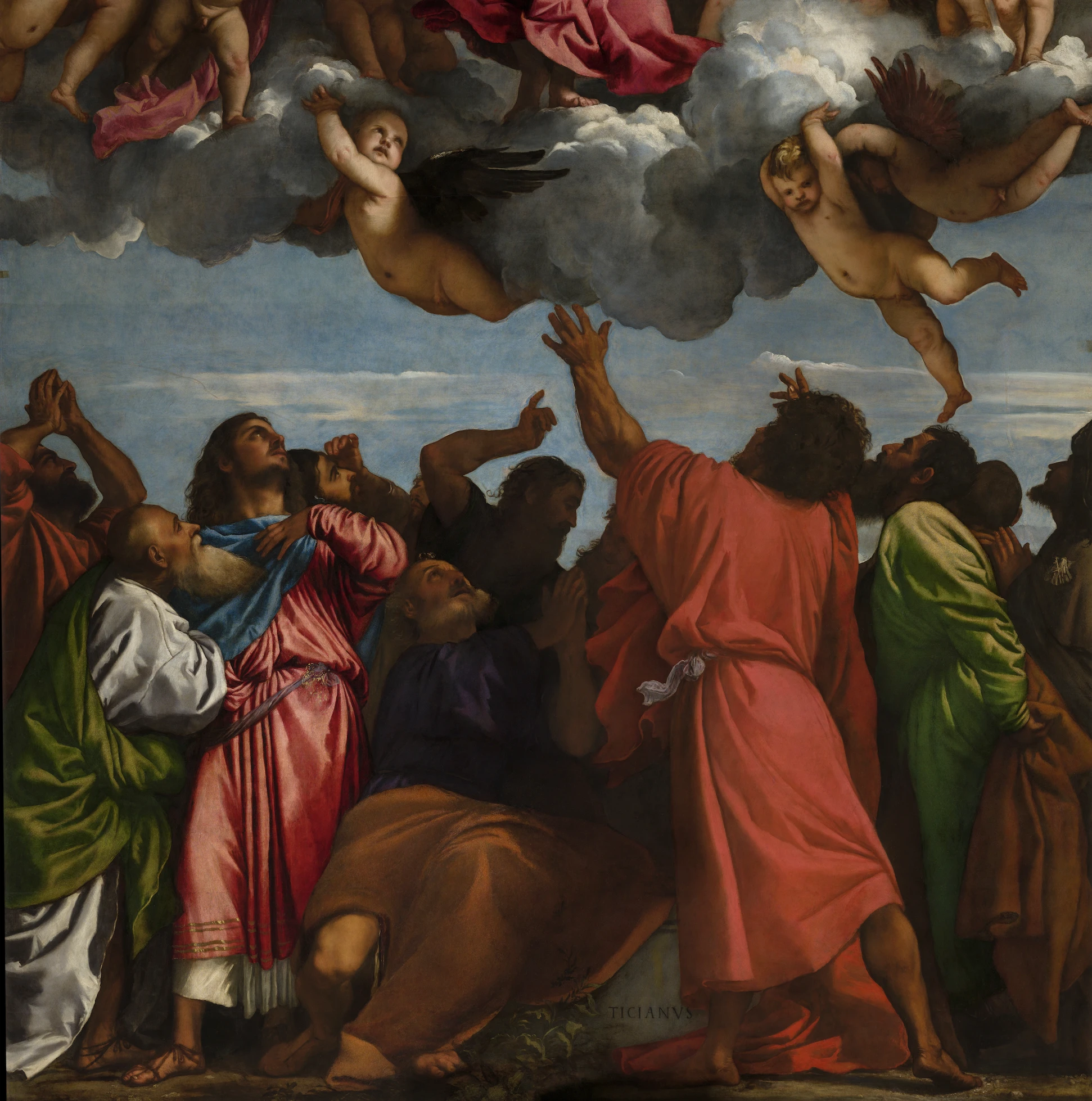
Titian painted the Assunta between 1516 and 1518, at the height of a triumphant phase in his career that saw him appointed Painter to the Republic—a prestigious title he would hold for nearly sixty years. Commissioned for the high altar of Santa Maria Gloriosa dei Frari, the grandest Franciscan church in Venice, the Assunta stands as Titian’s largest single-panel painting and one of the most ambitious artistic achievements of the Renaissance. This altarpiece towers to more than 22 feet tall and is painted in oil on 22 horizontal poplar planks. Framed by a magnificent structure in Istrian stone—attributed to Lorenzo and Giambattista Bregno and conceived in collaboration with Titian himself—the painting is set within a design modeled on a Roman triumphal arch. This magnificent stone frame is crowned by three imposing sculptures of Saint Francis, Saint Anthony, and Christ the Redeemer.
When Titian’s Assunta was unveiled on May 19, 1518, it caused an uproar. Its bold composition and unprecedented scale stunned the public, who responded with shock and disapproval—some, according to contemporary accounts, “said all the ill they could of it.” Writing in 1557, Ludovico Dolce recounted this reaction in his Dialogue on Painting, vividly describing the audience’s initial resistance to such a radical departure from tradition. Yet Dolce would go on to overturn this early criticism, positioning Titian as an artist not only equal to Michelangelo and Raphael, but one who rivaled nature itself in his expressive power. History proved him right. Dolce’s enthusiastic defense helped spark a centuries-long debate around the Assunta, one that continues to captivate art historians to this day. Now widely regarded as a masterpiece of the European Renaissance, the painting stands among the most admired and closely examined works in the history of Western art.

Scholars have long debated the fundamental compositional structure of Titian’s Assunta. Traditionally, it was thought to consist of two distinct geometric forms: the Virgin Mary enclosed in a circular space above, and the astonished apostles arranged in a horizontal, rectangular block below. According to this interpretation, Titian intentionally suppressed depth to emphasize a dramatic, narrow vertical ascent. However, recent conservation work has significantly challenged this long-held view. With the painting’s originally intended depth now fully revealed, a far more complex and three-dimensional spatial composition has emerged.
The Virgin, robed in crimson, is no longer simply rising; she is also stepping forward into space, her arms outstretched—reaching upward to meet God the Father, who awaits to crown her Queen of Heaven, and outward to embrace the congregation gathered before the high altar. Below, the apostles—whose dynamic gestures and interactions animate the composition—are not compressed into a flat foreground but are instead positioned around the Virgin’s open sarcophagus, forming a circular, three-dimensional group.

This spatial arrangement, reinforced by the cast shadows of the tangible, weight-bearing clouds that lift the Virgin, lends the scene a striking sense of physical reality. It also visually reinforces key elements of Marian theology, particularly those upheld by the Franciscan order. The scene vividly evokes the doctrine of the Immaculate Conception—Mary’s freedom from Original Sin from the moment of her conception—as well as her bodily Assumption into heaven, seen as a direct consequence of her immaculate nature. This theological emphasis is further underscored by the two inscriptions held by cherubs flanking the Virgin, which read “BE VI” (Beata Virgo) and “GLO” (Gloriosa). These inscriptions not only reference the church’s dedication—Santa Maria Gloriosa dei Frari—but also allude to the “glorious” Assumption of Mary, as it was referred to at that time.
Titian ‘chiseled’ his signature—“TICIANVS”—at the base of the Virgin’s sarcophagus, a bold declaration of authorship that immortalizes the artist behind this groundbreaking altarpiece. With this masterpiece, Titian reached a new pinnacle in his career, earning a place alongside Michelangelo’s Sistine Chapel ceiling and Raphael’s Stanza della Segnatura as one of the defining achievements of the High Renaissance.
